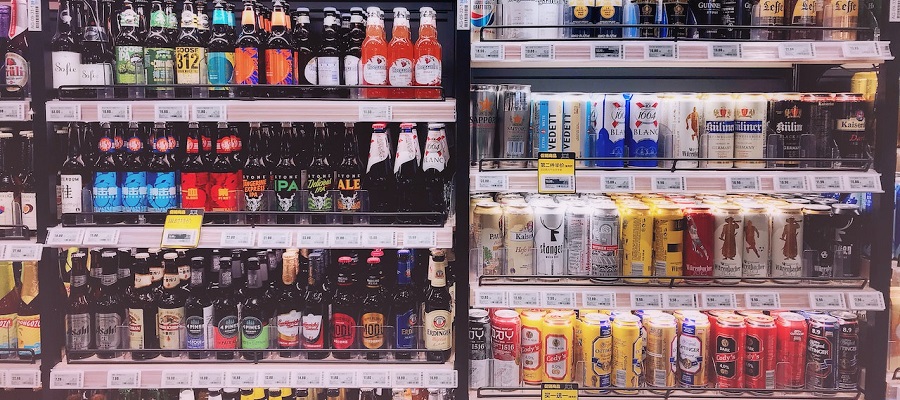Grocery wholesale stores and traditional retail stores offer different prices on products and supplies. In this article, we will explore the factors that influence the prices at grocery wholesale and traditional stores, and the benefits and challenges of shopping at each type of store.
-
Factors that influence prices at grocery wholesale and traditional stores
There are several factors that can influence the prices of products at grocery wholesale and traditional stores. Some of the main factors to consider include:
-
Quantity of products being purchased: Wholesale stores often offer lower prices on products when they are purchased in larger quantities, as opposed to smaller quantities. This is because wholesale stores typically sell products to other businesses, which need to purchase large volumes of products to stock their stores or to meet customer demand. In contrast, traditional stores may offer lower prices on products when they are purchased in smaller quantities, as they are selling to individual consumers who may not need as much of a particular product.
-
Type of product: The type of product being purchased can also influence the prices of products at wholesale and traditional stores. Some types of products may be less expensive at wholesale stores, due to the volume of the products being purchased and the associated economies of scale. For example, wholesale stores may offer lower prices on bulk items such as rice, beans, or flour, which are purchased in large quantities and have a long shelf life. Other types of products, such as fresh produce or dairy, may be more expensive at wholesale stores, as they have a shorter shelf life and may require more frequent deliveries.
-
Terms of the purchase: The terms of the purchase, such as the payment method and delivery options, can also affect the prices of products at wholesale and traditional stores. Wholesale stores may offer discounts on products for customers who pay in cash or by check, rather than by credit card. In addition, wholesale stores may charge additional fees for delivery or shipping, which can affect the overall cost of the products. Traditional stores, on the other hand, may offer free delivery or pickup options, which can be more convenient for customers.
Overall, there are several factors that can influence the prices of products at grocery wholesale and traditional stores. By understanding these factors, businesses in the grocery industry can make informed decisions about where to purchase products, and can take advantage of the most cost-effective options.
-
Benefits and challenges of shopping at grocery wholesale and traditional stores
There are both benefits and challenges to shopping at grocery wholesale and traditional stores for businesses in the grocery industry.
One of the primary benefits of shopping at wholesale stores is the ability to access lower prices on products. Wholesale stores typically offer lower prices on products than traditional stores, as they are selling to other businesses rather than individual consumers. This can be especially beneficial for businesses in the grocery industry, as it can help them to reduce their costs and increase their profits. In addition, wholesale stores may offer bulk discounts on other types of supplies, such as packaging materials or equipment, which can further reduce costs for businesses.
Another benefit of shopping at wholesale stores is the ability to access a wider range of products, including specialty or hard-to-find items. Wholesale stores may offer a wider range of products than traditional stores, which can be useful for businesses that specialize in a particular type of product or cuisine. In addition, wholesale stores may offer delivery options, which can be convenient for businesses that do not have the resources or storage space to receive and store large quantities of products.
However, there are also challenges to shopping at wholesale stores. One of the main challenges is the need to purchase products in larger quantities, which may not be practical or cost-effective for all businesses. In addition, wholesale stores may be located farther from businesses, which can increase transportation costs and reduce the convenience of shopping at these stores.
Overall, there are both benefits and challenges to shopping at grocery wholesale and traditional stores for businesses in the grocery industry. By understanding these benefits and challenges, businesses can make informed decisions about where to purchase products, and can take advantage of the most cost-effective and convenient options.
Coclusion
There are both benefits and challenges to shopping at grocery wholesale and traditional stores for businesses in the grocery industry. Wholesale stores offer lower prices on products and may offer a wider range of products, including specialty or hard-to-find items. However, wholesale stores may require businesses to purchase products in larger quantities and may be located farther from businesses, which can increase transportation costs and reduce convenience. Traditional stores, on the other hand, may offer more convenient shopping options and free delivery or pickup, but may not offer as low of prices as wholesale stores. By understanding the benefits and challenges of shopping at both types of stores, businesses in the grocery industry can make informed decisions about where to purchase products and can take advantage of the most cost-effective and convenient options.


